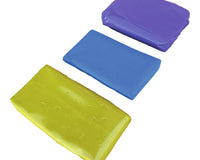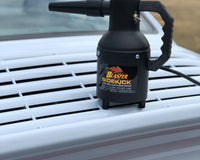Fleet vehicles are the lifeline of many businesses, from delivery services and corporate transportation to rental companies and utility providers. Keeping these vehicles clean, well-maintained, and visually appealing is not just a matter of aesthetics—it’s a business necessity. Fleet vehicle detailing ensures that each vehicle projects a professional image, protects its long-term value, and remains roadworthy. However, with dozens or even hundreds of vehicles to manage, time and efficiency are just as critical as quality. Striking the right balance between speed and thoroughness in detailing routines is what separates a mediocre operation from an exceptional one.
Understanding the Unique Challenges of Fleet Detailing
Unlike personal vehicles, fleet cars endure significantly higher usage and a broader range of driving conditions. They’re exposed to environmental pollutants, road grime, tree sap, and more on a daily basis. Add to that the challenge of rotating schedules, multiple drivers, and varied vehicle models, and it becomes clear why fleet detailing requires a customised approach. Additionally, downtime equals lost revenue, so businesses can’t afford prolonged detailing sessions. Balancing fast turnaround times with high-quality results is not just a goal—it’s essential.
Why Quality Cannot Be Sacrificed for Speed
It’s easy to fall into the trap of cutting corners when under pressure to complete multiple vehicles quickly. However, inadequate cleaning, rushed waxing, or skipping interior care can cause long-term issues. Paint degradation, upholstery wear, and unpleasant odours are more likely to occur without proper detailing. Inconsistent presentation of fleet vehicles can also damage a company’s reputation. Therefore, implementing high-quality procedures—even in a streamlined format—must remain the cornerstone of any fleet detailing strategy.

Establishing a Consistent Detailing Routine Across the Fleet
Standardisation is the first step toward efficient fleet detailing. Every vehicle should follow a clearly documented routine that covers both exterior and interior care. Having a checklist ensures consistency, improves accountability, and saves time during training. This might include steps such as pre-rinse, foam application, agitation, rinse, drying, interior vacuuming, surface wipe-downs, glass cleaning, and tyre dressing. The key lies in refining each step for optimal speed without compromising the end result. Automating documentation and keeping track of each vehicle’s last detail can also help managers maintain oversight.
The Role of Pre-Wash and Touchless Systems in Time-Saving
Pre-wash and touchless washing methods can drastically reduce manual labour without sacrificing cleanliness. These systems use pressure and foam to remove the majority of dirt before contact washing. For fleets, this means faster turnarounds and less risk of introducing scratches through aggressive scrubbing. Water reclaim systems and overhead pressure washers installed in dedicated wash bays can also speed up operations while ensuring environmental compliance. Although initial investment is required, the return in efficiency is substantial.
Interior Cleaning: Fast, Effective, and Consistent
The interior condition of a fleet vehicle affects both driver satisfaction and brand perception. However, deep cleaning every time is neither practical nor necessary. Instead, implement a tiered approach: quick daily tidies, weekly vacuuming and wipe-downs, and monthly deep cleans. Use dry steamers and portable vacuums to speed up the process, especially for stains or crevices. Microfibre cloths and non-greasy cleaners are ideal for rapid dashboard and plastic panel care. For commercial fleets with high passenger turnover, such as taxis or ride-share vehicles, odour management and seat sanitation should be more frequent.
Paint Protection: Saving Time with Long-Term Solutions
One of the most time-consuming aspects of detailing is correcting paintwork damage caused by frequent washing and exposure. By applying a long-term paint protection solution such as ceramic or graphene coatings across the fleet, you significantly reduce the need for frequent waxing or polishing. These coatings make it harder for dirt to adhere and easier to clean off, cutting down both time and effort. Although this requires an upfront cost, it pays off in reduced maintenance and higher vehicle resale values.
Using Time-Saving Tools and Techniques
Efficiency doesn’t only come from speed—it comes from smart planning and tool selection. Dual-action polishers, high-pressure foam cannons, cordless vacuums, and soft drying towels can all reduce detailing time. Equipping teams with mobile detailing carts ensures everything they need is within reach, cutting out unnecessary trips back and forth. Pre-diluted chemical sprayers and labelled bottles prevent product mix-ups and help maintain workflow continuity. The right tools enable even less experienced staff to deliver high-quality results quickly.
Training Staff to Balance Speed with Attention to Detail
Staff training is crucial in achieving high-quality detailing in minimal time. Employees should understand not just the ‘how’ but also the ‘why’ behind each process. Training sessions should cover best practices for avoiding swirl marks, spotting problem areas quickly, using tools efficiently, and ensuring health and safety. Use visual guides and mock scenarios to help staff understand how to adapt their speed depending on the condition of the vehicle. Experienced teams are more likely to identify shortcuts that do not compromise quality, such as efficient drying techniques or the use of all-in-one products.
Scheduling and Rotation: Planning for Maximum Uptime
Maintaining a detailing schedule that aligns with vehicle usage is essential for minimising downtime. Set cleaning frequencies based on mileage, vehicle role, and exposure levels. High-mileage vehicles may need weekly detailing, while low-use units might suffice with monthly maintenance. Scheduling software can automate reminders and provide insights into usage trends. By avoiding last-minute clean-ups or emergency overhauls, you not only save time but ensure your entire fleet maintains a consistent and professional appearance.
Environmental and Regulatory Considerations
Fleet detailing must also comply with environmental regulations, particularly when it comes to water usage, chemical run-off, and disposal. Using water-saving equipment and biodegradable cleaning agents can reduce your environmental footprint. Wastewater reclamation systems and proper ventilation are crucial for indoor detailing operations. Compliance not only helps the planet but protects your business from costly fines or reputational damage. More importantly, it reassures clients and stakeholders that your company is committed to responsible operations.
Mobile Detailing vs In-House Detailing Operations
Fleet managers often face the choice between outsourcing detailing to a mobile service or building an in-house team. Mobile services offer flexibility and reduced overheads, but can be inconsistent in quality. In-house teams provide greater control and faster turnaround, especially if a dedicated space is available. A hybrid approach—where mobile services handle overflow or less frequent tasks—can also work well for larger fleets. Evaluate your fleet’s size, budget, and operational requirements to choose the most sustainable model.
Monitoring Results and Improving Continuously
Even the most well-planned detailing routine must evolve. Set clear performance benchmarks such as turnaround time, vehicle condition score, and staff efficiency. Solicit feedback from drivers or customers to identify issues with cleanliness or presentation. Use this data to refine your processes, upgrade equipment, or provide additional training. Periodic reviews help you stay ahead of wear and tear, improve fleet aesthetics, and preserve vehicle value over the long term.
Conclusion: Getting the Balance Right for Lasting Success
Detailing fleet vehicles is more than just a cosmetic task—it’s a critical part of vehicle maintenance and brand representation. Achieving the right balance between speed and quality involves strategic planning, investment in the right tools, ongoing training, and a clear understanding of your fleet’s unique needs. By implementing a structured, efficient, and high-quality detailing routine, businesses can ensure their vehicles remain presentable, protected, and profitable in the long run.




